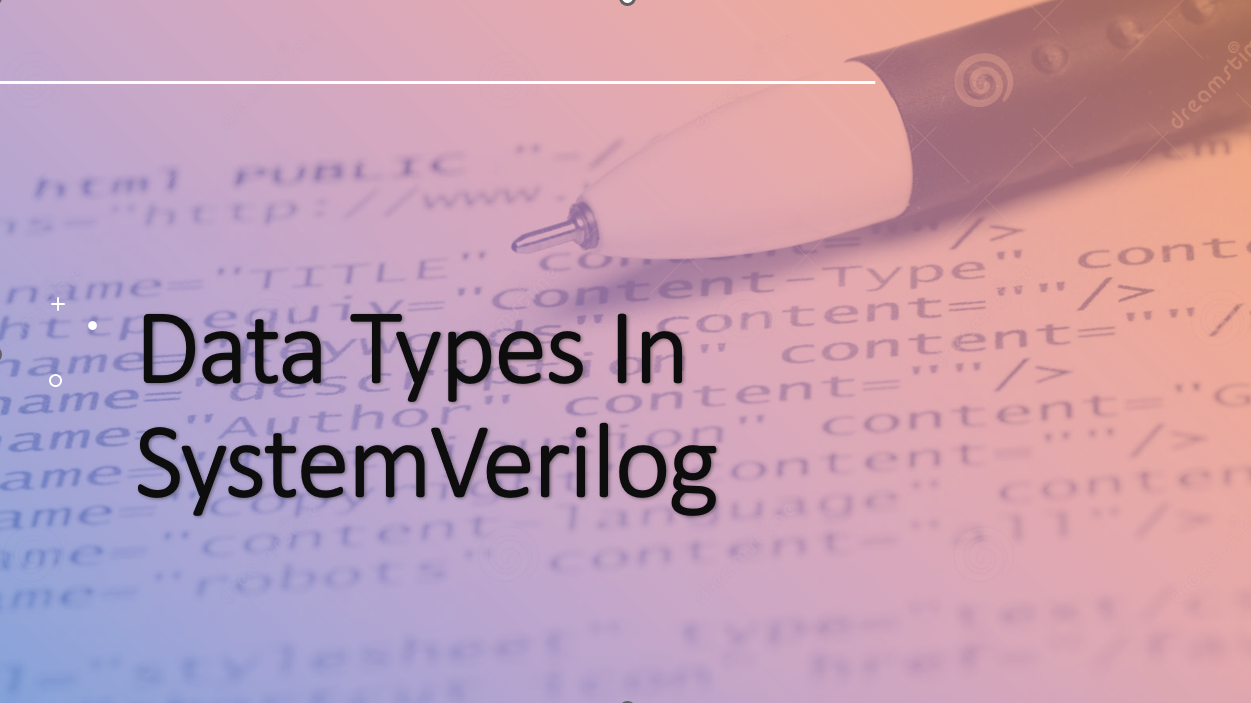Data Types In System Verilog

SystemVerilog provides several data types to facilitate hardware design and verification. These data types can be classified into several categories, including scalar types, composite types, and user-defined types. Here's an overview of the main data types in SystemVerilog: 1. Scalar Types :- bit : A single binary digit, representing '0' or '1'. logic : A 4-state data type, representing '0', '1', 'x' (unknown), or 'z' (high-impedance). byte : An 8-bit scalar data type. 2. Integer Types :- int : A signed 32-bit integer. shortint : A signed 16-bit integer. longint : A signed 64-bit integer. byte : An unsigned 8-bit integer. shortint : An unsigned 16-bit integer. longint : An unsigned 64-bit integer. 3. Floating-Point Types :- real : A 32-bit IEEE 754 single-precision floating-point number. realtime : Similar to the real...

